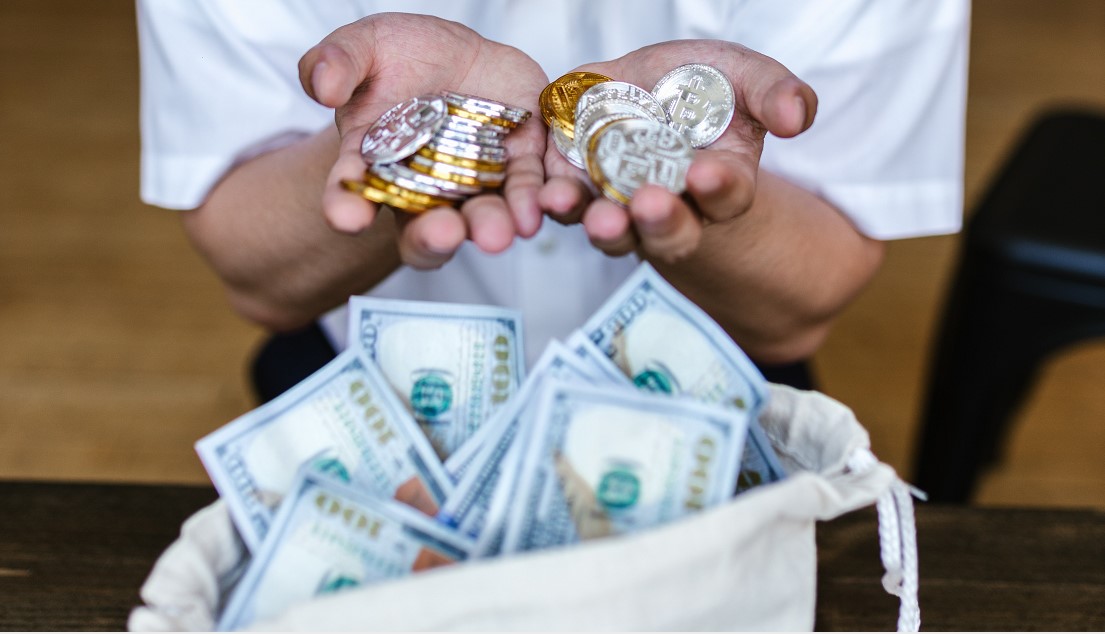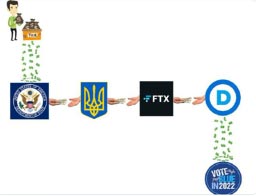FTX, The Rise And Fall Of A Crypto Ponzi Scheme

Image Source: Pexels
By now, you have heard about the FTX exchange bankruptcy. But you may be justifiably desensitized. Desensitized because the frequency of crypto disasters is at least yearly.
This FTX crypto scandal is a next-level scandal reading like an over-the-top Hollywood film, a bizarre crypto con story ending badly.
FTX frontman Sam Bankman-Fried was in his twenties when he became a billionaire last year.
His daily routine is highly dysfunctional, and his personality is profoundly impaired. This contrasts with most con men who are charming and charismatic.
Instead, Sam's the opposite. He's jittery, awkward, and unkempt.
His crew allegedly lived off amphetamines, ate poorly, and slept in bean bag chairs while living a "polyamorous" lifestyle with other Millennials in the Bahamas. (Polyamorous means all these kids slept with each other.)
One might say this lifestyle resembled that of a rapper in gold chains with hot chicks, except not.
FTX meltdown is the story of a flash-in-the-pan unlikely billionaire, and his empire's rocket blast to fame was so suspicious. But like any good crime mystery's conclusion, now all the puzzle pieces fit together, and we can see this inglorious image.
After connecting the dots, it's pertinent to identify the folks who backed Sam.
Awkward Sam was backed by a few of the world's most powerful people, and in Sam Bankman-Fried, these world leaders got their man and manipulated the World's Best Fall Guy.
They exploited what they wanted out of him (money), and now they are spitting out this weirdo kid destined for prison and exile.
But why did he do it?
Sam had purchased naming rights on the NBA stadium for the Miami Heat. He had conned others into building a metaverse-style fantasy empire worth $16 Billion.
Sam was the darling of Wall Street, hedge funds, but his reach deep into the Deep State is most alarming.
FTX started up within days of Joe Biden announcing his presidency in 2019. Sam gave $10 million to get Biden elected in 2020.
And only George Soros donated more than Sam during the 2022 election cycle, gifting $40 million to the Democratic Party for get-out-the-vote schemes.
Then suddenly, his business files for bankruptcy. Just two days after the midterm elections.
Sam's mother, Barbara Fried, is a law professor at Stanford. Barbara Fried is also the co-founder of a left-wing political action committee called Mind The Gap which itself pumped $140 million into the midterms.
Misusing depositors' money to influence elections during any historical period would be front-page news warranting investigations. But the people they helped win can be expected to at least try to sweep this whole thing under rug.
Sam's government contacts and donations help him to go after business with foreign governments. For example, one report suggests that Ukraine deposited a considerable sum of its foreign aid provided by U.S. taxpayers into FTX.

This entire meltdown consisted of funds created from thin air.
Sam's crypto token and crypto exchange had zero intrinsic value.
The whole thing appears to have been a gigantic Ponzi, but we've seen this repeatedly with every crypto disaster.
In 2014, Mt Gox meltdown wiped out 800,000 bitcoins. Before the collapse, Mt Gox treaded water only as long as its gullible customers continued to deposit funds at a rate faster than withdrawals.
However, as with any Ponzi scheme, as soon as withdrawals exceeded deposits, Mt. Gox had to suspend redemptions and declare bankruptcy.
In 2022, Alex Mashinsky's Celsius followed the same pattern, and now dozens of other exchanges are pausing withdrawals. Why? Because a run on the exchange is like a run on the bank. The bank or exchange sometimes doesn’t have the money.
Mt Gox, Celsius, Luna, 3 arrows, FTX, Alameda, BlockFi, Genesis and Japanese cryptocurrency exchange Liquid have halted withdrawals.
The actors in the flawed bitcoin ecosystem may think their misdeeds will go undetected. This is because they get so caught up in an uncontrollable lust for greed, power, and prestige.
Here's the sad irony…
Many early adopters bought bitcoin to protect their wealth from fractional reserve banking. Fractional reserve banking systems do not store customer deposits but invest them and carry deposits as their own liabilities.
Holding bitcoin or any other crypto on an exchange is the same thing.
Notwithstanding disclosures to the contrary, an exchange that operates like FTX owed cryptos to depositors but had lent them out like a bank does… and thus, could not withstand concentrated withdrawals.
FTX, Fractional Reserve Banking, and Stocks all work the same way.
Once a customer has deposited his money (paper), bitcoin (math problem) or stock (paper certificate) into a bank, exchange, or brokerage account, he no longer owns that asset directly. He instead has a claim on that asset which is backed by the general pool of assets of the institution holding it. That’s called credit risk.
Make that SEVERE credit risk in the FTX case!
By contrast, physical gold and silver – held in your personal possession or a trusted depository not connected to the financial system – are the only assets on the planet that are not someone else's liability.
More By This Author:
Wyoming & South Dakota Top 2023’s Sound Money Index
Federal Reserve Note Suffers Pivotal Breakdown
Collapse Of FTX Exchange Poses Warning Of Much Broader Risks



